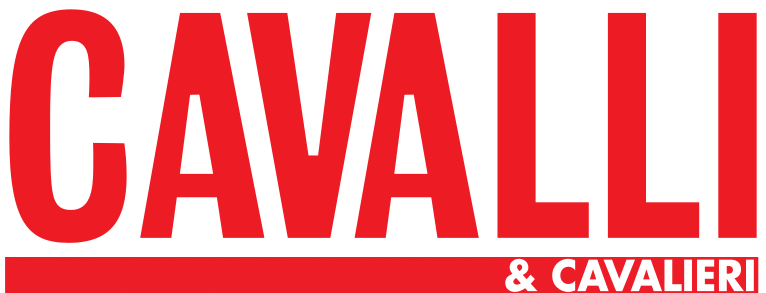Veterinary Joint Medicine
FENCE AFTER FENCE…
…WHAT REALLY HAPPENS TO YOUR HORSE’S JOINTS?
Prof.ssa Emanuela Valle
Full Professor – EBVS® European Specialist in Veterinary and Comparative Nutrition
Watching a horse jump is a unique emotion. The elegance, the power, the synergy with the rider is an exclusive experience: everything seems fluid and natural. But behind that athletic perfection, there is a silent and tireless work of the horse’s musculoskeletal system, especially of the joints. Every jump, every canter, every landing from a jump involves a considerable impact on the limbs. The biomechanical data speaks clearly: when a horse lands from a jump, his limbs can withstand forces up to 2.5 times his body weight. For a 500 kg horse, this means over 1200 kg of load on each front limb. And it’s not just about jumps: every step, every time the hoof touches the ground, it generates a force (the ground reaction force) that travels up the limb, putting pressure on tendons, ligaments and joints.
Over time, this constant stress can cause wear and tear, inflammation and subsequent pain, compromising mobility, performance and overall well-being. This is where modern biomechanics become useful, allowing us to better measure and understand these forces. Thanks to increasingly advanced technology, vets, farriers and riders can prevent injuries, improve training management and extend the horse’s sporting career.
A key role in joint health is played by cartilage, the thin layer that covers the extremities of the bones inside the joint. When it works well, it allows a smooth and painless movement. But if it begins to deteriorate – due to age, workload or inflammation – a degenerative process known as osteoarthritis is triggered. The synovial fluid, which normally lubricates and nourishes the joint, becomes less effective, and the horse may begin to show signs of pain, stiffness or reduced performance.
When inflammation becomes degeneration
The term arthritis refers to any inflammatory condition that affects a joint. It can have different origins: traumatic, caused by infections (more common in foals) or linked to developmental pathologies, such as osteochondritis dissecans (OCD). Arthritis usually manifests itself with the classic signs of inflammation: swelling, increased local temperature and pain, which can result in lameness or stiffness of movement. If not treated properly, inflammation can lead to chronic changes in the joint, leading to a degenerative condition known as osteoarthritis. Osteoarthritis is a chronic and progressive joint disease characterized by cartilage degeneration, persistent inflammation and structural changes in the joint. It can be the direct consequence of acute, unresolved arthritis that then causes pain and lameness, significantly compromising the horse’s mobility and quality of life. Your vet, through diagnostic tests such as x-rays, can identify typical signs of joint degeneration, such as: narrowing of the joint space, remodelling of the subchondral bone and formation of osteophytes (a type of bony growth). Prompt intervention, combined with proper management of physical activity and – when necessary – the use of supplements or pharmacological treatments, can help the slowing down of the degenerative process and improve the comfort of the horse.
Support joints with the right nutrition
Although the term ‘nutraceutical’ does not officially appear on the labels of products formulated for equine consumption, many of what we commonly call ‘supplements’ fall into this category. From a regulatory point of view, these can be considered complementary feeds: mixtures of nutritional and functional substances that, while not having a pharmacological action, can offer concrete benefits for the health of the horse.
Even if they cannot be considered medications, these supplements can support the diet in by helping to maintain the health of the horse.
Joint supplements contain ingredients such as glucosamine, chondroitin, MSM, hyaluronic acid and natural antioxidants. Their goal is to protect cartilage, reduce inflammation and promote joint lubrication.
For this reason, integrating the diet with specific joint supplements can make a difference. Some ingredients can help slow down cartilage degeneration, stimulate the production of collagen and hyaluronic acid, reduce inflammation and can even help to manage pain. However, not all products are the same: it is essential to choose supplements with scientific evidence, designed specifically for horses, and suited to individual needs (age, type of work, any pathologies).
Joint health is not just a matter of performance, it is a responsibility we have towards our horses. Understanding what happens ‘behind the scenes’ of every jump or gallop is the first step to protect them, support them and ensure they have a long, active and happy sporting life. They are not drugs, but if chosen well – with quality ingredients and correct dosages – they can help prevent or slow down joint problems, improving the comfort of the horse. As always, it is important to ask your vets for advice in choosing the most suitable product.
A small nutrient, a big impact
Despite being ‘just’ a vitamin, vitamin C has a significant impact on joint health, especially when the body is put to the test by inflammation or intense efforts.
Placed in the right context, it can become a valid support for the prevention and management of joint problems.
It is essential for producing collagen, the protein that gives structure to cartilage, tendons and ligaments. Even if the horse is able to produce it naturally, in situations of stress, intense training or joint inflammation, this production may not be enough. In these cases, a supplement is useful.




